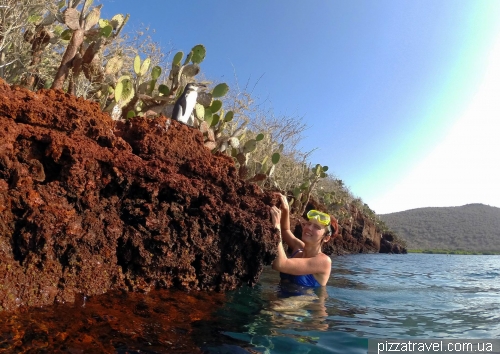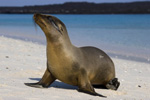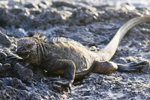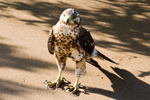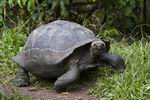Rabida Island has a second name Jervis, in honor of the British Admiral John Jervis. The official name Rabida was given in honor of the monastery in Spain.
Who lives here:
- sea lions, saw several
- flamingos, not seen
- brown pelicans, saw several
- hermit crabs, saw many
- mockingbirds, saw several
- galapagos doves, saw several
- american oystercatchers, saw several
- white-cheeked pintails, not seen
- booby, not seen
- finches, not seen
When reaching the island, the eye catches a huge rock collapse. Looks very impressive, seems that happened not long time ago.
In 1975 the population of goats was eliminated on the island. They were introduced there in 1971. It is not clear to me how they could get on a small, rocky, uninhabited island? And nowadays national park authorities need to eliminate rats, which apparently came to the island from the ships.
Rabida has a distinctive feature - the red sand on the beach. Seal lions like to lay on it.
Swimming and snorkelling is possible here. Near the shore water is not clean, so better swim along the rocky shore little futher. You can even see a penguin on a rock, that is unusual for this place.
In the bushes you can find quite a lot of different animals.
1.1 km long eco-trail starts from the beach. It goes along a small salt lake, where you can find flamingos, but not during our visit :) Although we saw few american oystercatchers.
Eco-trail here is good to view landscapes and meet a variety of birds.
When we returned our place was already occupied :)
Getting there: Only during the cruise



